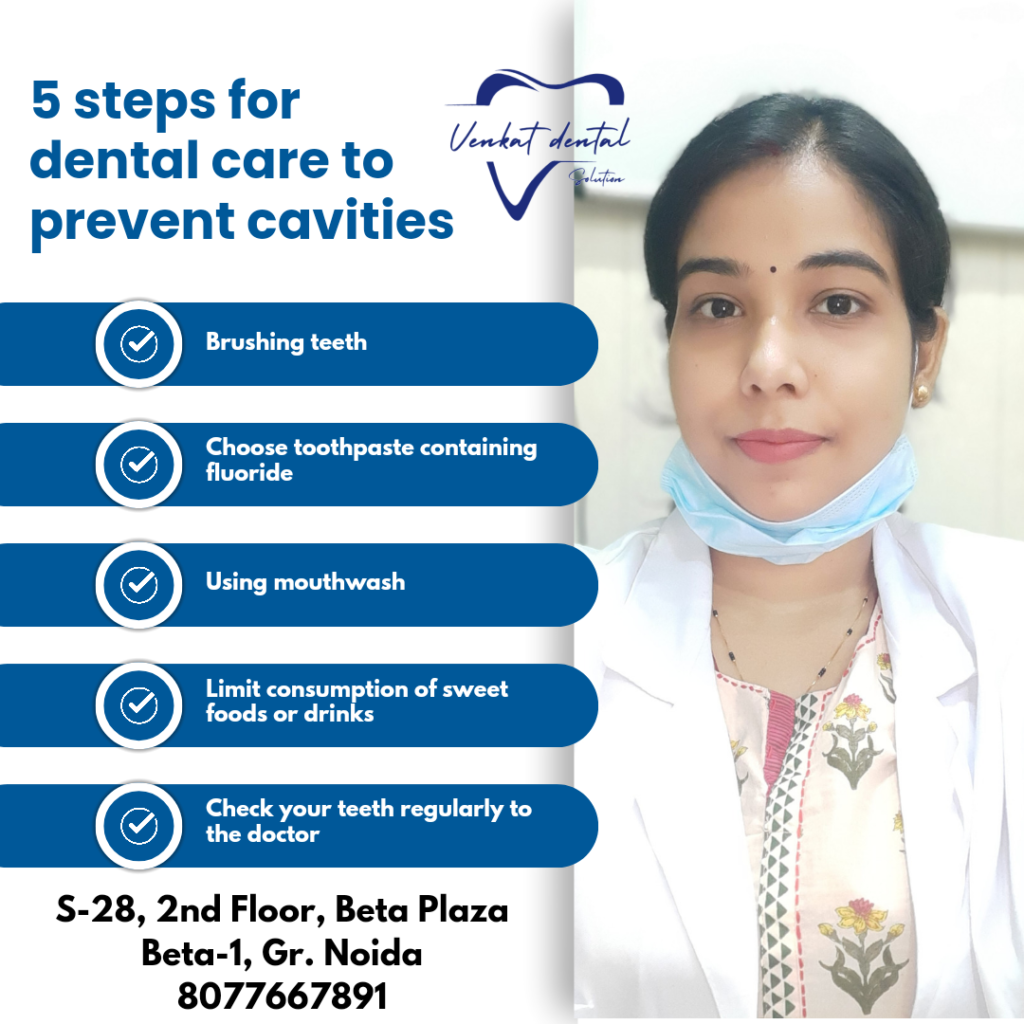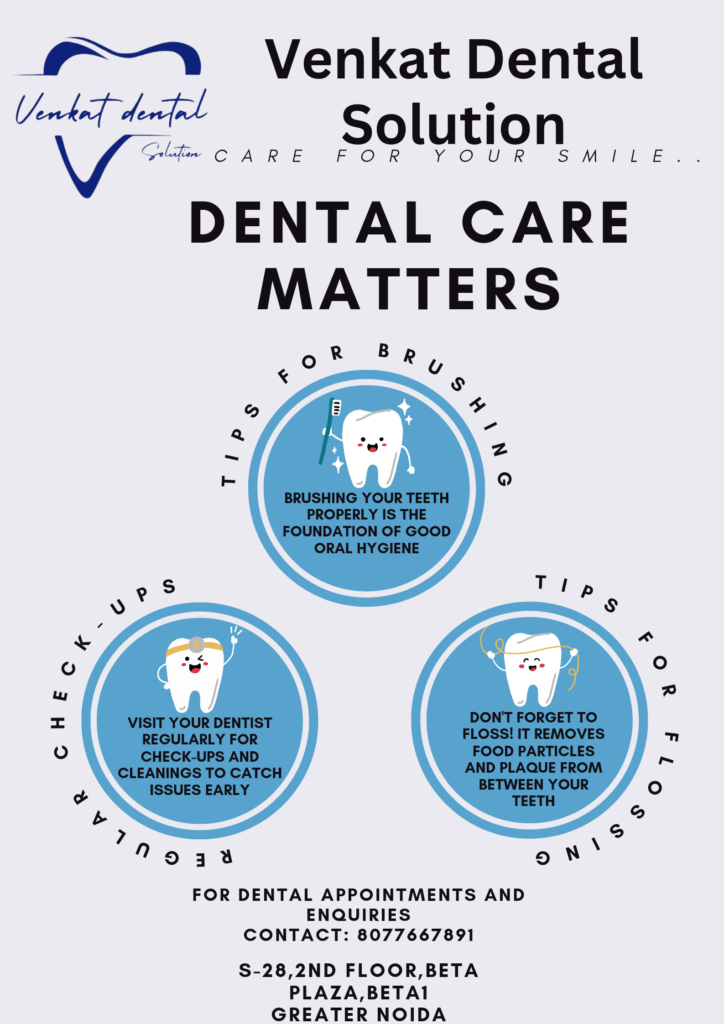Professional service for Dental Extraction at Venkat Dental Solution...
Dental Extraction Services at Venkat Dental Solution
At Venkat Dental Solution, we understand that sometimes, preserving a tooth isn’t possible, and extraction becomes necessary to protect your overall oral health. Our experienced dental team ensures that tooth extractions are performed safely, comfortably, and with minimal disruption to your life. Whether you’re facing an extraction due to decay, injury, or overcrowding, our clinic provides expert care for all your dental needs.
What is Dental Extraction?
Dental extraction is the removal of a tooth from its socket in the bone. While our primary goal is to save your natural teeth whenever possible, extraction may be required for several reasons, including severe tooth decay, infection, or damage that cannot be repaired.
Reasons for Dental Extraction
Severe Tooth Decay: If tooth decay has penetrated too deeply and can’t be restored with a filling or crown, extraction may be the only option.
Infection or Abscess: When a tooth becomes infected or develops an abscess that doesn’t respond to root canal treatment, extraction is necessary to prevent the infection from spreading.
Overcrowding: In cases where there isn’t enough room for all your teeth to grow properly, such as before orthodontic treatment, an extraction may be recommended to create space.
Gum Disease: Advanced periodontal disease can weaken the tissues and bone supporting the tooth, sometimes making extraction necessary.
Impacted Wisdom Teeth: Wisdom teeth that don’t have enough room to emerge or grow at an angle can cause pain, infection, or damage to neighboring teeth. Extraction is often recommended in such cases.
Types of Dental Extraction
At Venkat Dental Solution, we offer two main types of dental extractions:
Simple Extraction: This procedure is performed on visible teeth that can be easily accessed. The dentist loosens the tooth with an instrument called an elevator and then removes it using forceps. Simple extractions are usually quick and performed under local anesthesia.
Surgical Extraction: In cases where a tooth is impacted, broken at the gum line, or otherwise difficult to remove, a surgical extraction may be necessary. This involves making an incision in the gum to access the tooth. Surgical extractions are more complex and may require stitches, but they are performed under local anesthesia and, if needed, sedation to ensure patient comfort.
The Extraction Process
Initial Examination: Our dentist will examine the tooth and take X-rays to assess the best approach for the extraction. This helps in planning the procedure and identifying any potential complications.
Anesthesia: Before the procedure, local anesthesia is applied to numb the area around the tooth. For more complex extractions or anxious patients, sedation options are available to ensure comfort.
Tooth Removal: During a simple extraction, the dentist will gently loosen the tooth with an elevator and remove it using forceps. For surgical extractions, an incision may be made in the gum to access and remove the tooth.
Post-Extraction Care: After the tooth is removed, the dentist will provide detailed instructions on how to care for the extraction site. In some cases, stitches may be required. Pain management, typically with over-the-counter medications, will also be discussed.
Post-Extraction Recovery
After a dental extraction, it’s essential to take care of the extraction site to promote healing and avoid complications such as infection or dry socket. Here are some key points to keep in mind:
- Apply Pressure: After the extraction, you will be asked to bite down on a gauze pad to stop the bleeding and help form a clot. Keep the gauze in place for 30-45 minutes.
- Rest: Rest for the first 24 hours and avoid physical activity that could dislodge the blood clot.
- Avoid Straws: For the first 24 hours, avoid drinking through a straw, as the suction can disturb the blood clot and cause dry socket.
- Soft Foods: Stick to soft foods like yogurt, applesauce, and mashed potatoes for the first few days. Avoid hot or spicy foods that could irritate the extraction site.
- Good Oral Hygiene: Continue brushing and flossing, but avoid the extraction site for a few days. Rinse gently with salt water to keep the area clean and promote healing.
Common Questions About Dental Extractions
Is a dental extraction painful?
With modern anesthesia and sedation options, dental extractions are typically painless. You may feel some pressure during the procedure, but there should be no pain. After the extraction, mild discomfort is common, but this can be managed with over-the-counter pain relievers.
How long does recovery take?
The initial healing process usually takes about 1 to 2 weeks. Full recovery, including bone healing, may take several months. However, most patients can return to normal activities within a few days of the procedure.
What should I do if I experience severe pain after the extraction?
If you experience severe pain, especially a few days after the extraction, contact our office. This could be a sign of dry socket, a condition where the blood clot is dislodged, exposing the bone and nerves. Our dentist will provide the appropriate treatment to relieve your discomfort.
Why Choose Venkat Dental Solution for Dental Extractions?
At Venkat Dental Solution, we prioritize your comfort and safety during every procedure. Our team is highly skilled in performing both simple and surgical extractions using the latest technology and techniques. We understand that the idea of tooth extraction can be daunting, which is why we offer sedation options and a calming environment to put you at ease.





